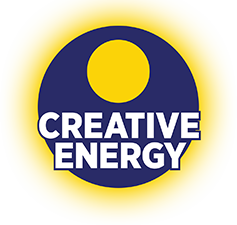Your cart is currently empty!

Anyone who takes fitness seriously knows that gains don’t happen during a workout. They happen after. Recovery is where the real transformation begins, allowing your body to repair muscles and rebuild strength so you can come back even stronger the next day. But if your recovery routine isn’t supporting that process, your progress can plateau.
That’s why so many athletes and wellness enthusiasts are turning to infrared saunas to promote better workout recovery. Infrared saunas use targeted light and heat to warm your body from within. This helps improve circulation, reduce soreness, and induce deep relaxation—all of which are essential for post-workout recovery.
In this blog, we break down how infrared saunas support workout recovery and the science behind it.
Note: This content is for informational purposes only and does not constitute medical advice. Always consult with a qualified healthcare provider before starting any new wellness practice, including the use of infrared saunas.
How Infrared Saunas Support Workout Recovery

No workout is complete without a proper recovery routine. Exercise creates microscopic tears in your muscles. It’s during rest—not training—that your body naturally repairs them, making your muscle fibers grow thicker and stronger over time. The steps you take immediately after a workout can make all the difference in how quickly and effectively your body bounces back. That’s where infrared saunas become a game-changer.
Infrared saunas use far infrared radiation (FIR) to warm your body from within. This stimulates a powerful detoxifying sweat response, improves blood flow, and promotes whole-body relaxation. Infrared saunas also create an environment that encourages your body’s natural healing process, helping you recover more efficiently so you can get back to training sooner—and stronger.
But how does this benefit your recovery routine, exactly? Below are some of the top benefits of infrared saunas for workout recovery, all of which are backed by science:
1. Improves Blood Flow
Blood flow is incredibly important for bouncing back after a workout. In fact, studies show a positive correlation between increased blood circulation and better performance recovery.1 Good circulation not only delivers fresh oxygen and nutrients to healing muscles, but also flushes out metabolic waste that contributes to pain and stiffness.
According to research, FIR therapy can be a helpful tool for increasing blood flow.2 The heat from infrared saunas raises your body’s core temperature, triggering a reaction that widens the blood vessels (vasodilation). This makes it easier for blood to circulate through the body, reducing soreness and promoting faster healing.
2. Reduces Muscle Soreness
Delayed onset muscle soreness (DOMS) is a common issue that many people face after intense exercise. It usually reaches its peak 24–48 hours after a workout.3 DOMS is not only uncomfortable, but can also reduce range of motion, make you more susceptible to injury, and make it harder for your body to absorb the impact.4 This can all get in the way of training goals or maintaining routine exercise habits.
Fortunately, infrared saunas offer a possible solution. The combination of heat and infrared energy helps soothe sore muscles. In fact, one study found that FIR therapy minimized muscle soreness by up to 60%.5 Another observed that just one infrared sauna session was enough to decrease soreness the day after resistance exercise, which is usually when DOMS is at its peak.6
By helping the body recover faster and feel better sooner, infrared saunas can be a powerful way to minimize the impact of DOMS and keep your workouts on track.
3. Flushes Out Metabolic Waste
After a tough workout, your muscles produce metabolic byproducts like lactic acid. If these build up, they can cause muscle stiffness. As we mentioned above, infrared sauna sessions boost blood flow and improve circulation. This in turn also helps your body flush out these waste products more efficiently.2
This means less lingering muscle stiffness and fatigue and a quicker return to peak performance.
4. Enhances Flexibility
After a workout, your muscles and connective tissues can feel tight and stiff. The gentle heat of an infrared sauna can help loosen these tissues, making them more pliable. This increased elasticity improves overall flexibility and can make post-exercise stretching more effective. By keeping your muscles limber, sauna sessions may also reduce the risk of strains or injuries, supporting long-term wellness and mobility.
5. Provides Pain Relief
Workouts can sometimes leave behind sore muscles, achy joints, or lingering tension. The deep, soothing heat from an infrared sauna penetrates muscle tissue, helping to relax tight areas and ease discomfort. Unlike surface-level heat, infrared therapy heats from within, targeting deeper layers, which can provide longer-lasting relief.
By reducing muscle tension and calming joint pain, sauna sessions can make post-workout recovery more comfortable and help you get back to training with less downtime.
6. Enhances Mood and Readiness
Post-workout recovery goes beyond how you feel physically. How you feel mentally and emotionally is just as important when heading into your next training session.
Infrared saunas help reduce muscle soreness and improve perceived recovery, which experts believe can enhance mood, mental clarity, and motivation for athletes.6 This improved sense of readiness can stem from the clarity, deep relaxation, and better sleep quality that infrared saunas provide.
When athletes feel less sore and more rested, they’re more likely to approach their next workout with more energy, motivation, and confidence.
7. Supports Better Sleep Quality
Sleep is one of the most powerful recovery tools available to any athlete. This is when your body releases human growth hormone (HGH), which is key for regulating muscle repair.7 The deeper you sleep, the more HGH is released.8
This makes a good night’s sleep incredibly important because HGH deficiency is directly linked to loss of muscle mass.9 Sleep also releases cytokines, which are signaling proteins that help lower inflammation and support healing throughout the body.10
A global survey found that 83.5% of participants reported getting better sleep after using a sauna regularly.11 And better sleep means faster recovery, improved performance, and a stronger foundation for long-term wellness.
8. Relaxes the Nervous System
Intense workouts can activate the body’s sympathetic nervous system, or “fight or flight” response, which increases heart rate and stress hormones. While this is normal during exercise, staying in this heightened state too long can slow recovery.
Infrared saunas encourage a shift into the parasympathetic nervous system, often called the “rest and digest” state. This calming response helps lower stress levels, reduce muscle tension, and create the ideal conditions for recovery and repair.
Boost Your Fitness Routine with a Tylö Infrared Sauna
Infrared saunas are a powerful tool for post-workout recovery. They help increase circulation, promote relaxation, and support better sleep. Even just a few sessions each week can help your body recover faster and bounce back stronger, so you can keep performing at your best.
Creative Energy is a leading dealer of Tylö saunas in the Bay Area. Every Tylö sauna is crafted in Sweden with over 75 years of craftsmanship expertise. We have a large selection of infrared saunas, traditional saunas, and hybrid saunas. Our friendly team is ready to help you find the best wellness solutions for your needs, lifestyle, and budget. Contact us online today or visit any one of our award-winning showrooms to explore the benefits of infrared saunas in person.
References
- Borne, R., Hausswirth, C., & Bieuzen, F. (2016). Relationship between blood flow and performance recovery: a Randomized, Placebo-Controlled study. International Journal of Sports Physiology and Performance, 12(2), 152–160. https://doi.org/10.1123/ijspp.2015-0779
- Lin, C., Chang, C., Lai, M., Chen, T., Lee, P., & Yang, W. (2007). Far-Infrared therapy. Journal of the American Society of Nephrology, 18(3), 985–992. https://doi.org/10.1681/asn.2006050534
- Vickers, A. J. (2001). Time course of muscle soreness following different types of exercise. BMC Musculoskeletal Disorders, 2(1). https://doi.org/10.1186/1471-2474-2-5
- Cheung, K., Hume, P. A., & Maxwell, L. (2003). Delayed onset muscle soreness. Sports Medicine, 33(2), 145–164. https://doi.org/10.2165/00007256-200333020-00005
- Chen, T. C., Huang, Y., Chou, T., Hsu, S., Chen, M., & Nosaka, K. (2023). Effects of far‐infrared radiation lamp therapy on recovery from muscle damage induced by eccentric exercise. European Journal of Sport Science, 23(8), 1638–1646. https://doi.org/10.1080/17461391.2023.2185163
- Ahokas, E. K., Ihalainen, J., Hanstock, H. G., Savolainen, E., & Kyröläinen, H. (2022). A post-exercise infrared sauna session improves recovery of neuromuscular performance and muscle soreness after resistance exercise training. Biology of Sport, 40(3), 681–689. https://doi.org/10.5114/biolsport.2023.119289
- Van Cauter, E., & Plat, L. (1996). Physiology of growth hormone secretion during sleep. The Journal of Pediatrics, 128(5), S32–S37. https://doi.org/10.1016/s0022-3476(96)70008-2
- Van Cauter, E. (n.d.). Age-Related Changes in Slow Wave Sleep and REM Sleep and Relationship with Growth Hormone and Cortisol Levels in Healthy Men. JAMA, 284(7), 861. https://doi.org/10.1001/jama.284.7.861
- Carroll, P. V., Hormon, E. R. C. T. M. O. G., Bengtsson, B. Å., Carlsson, L., Christiansen, J. S., Clemmons, D., Hintz, R., Ho, K., Laron, Z., Sizonenko, P., Sönksen, P. H., Tanaka, T., & Thorner, M. (n.d.). Growth Hormone Deficiency in Adulthood and the Effects of Growth Hormone Replacement: A Review. The Journal of Clinical Endocrinology & Metabolism, 83(2), 382–395. https://doi.org/10.1210/jcem.83.2.4594
- Zhang, J., & An, J. (2007). Cytokines, inflammation, and pain. International Anesthesiology Clinics, 45(2), 27–37. https://doi.org/10.1097/aia.0b013e318034194e
- Hussain, J. N., Greaves, R. F., & Cohen, M. M. (n.d.). A hot topic for health: Results of the Global Sauna Survey. Complementary Therapies in Medicine, 44, 223–234. https://doi.org/10.1016/j.ctim.2019.03.012
